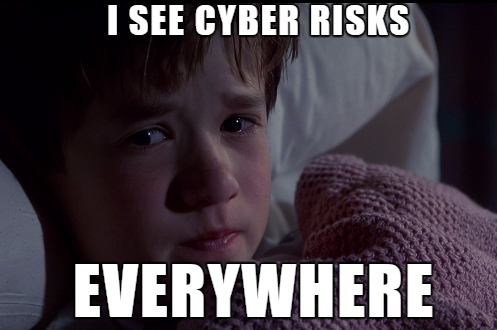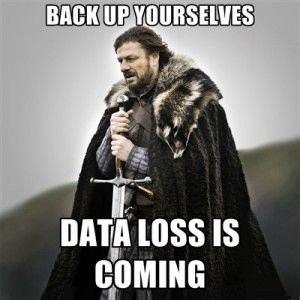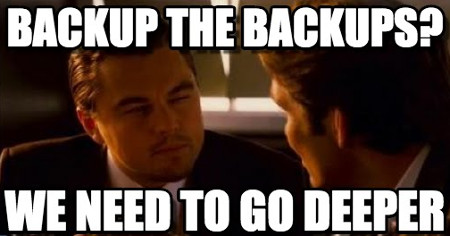[outdated] Information security in generic
Some very generic thoughts about informational security.
| WARNING |
|---|
| UPD. This article is outdated |
The topic is very complicated, but the scope of the subject will be described only in generics.
This list is not standard or something.
It’s more like marks on fields…
Generic⌗
v 0.02

- Be suspicious and don’t trust anything on words, especially tools with “Secure” in their name; - REMARK: Of course questions of trust and trustworthiness - are more complicated and deserve additional posts, but the main thing - is to be curious, ask questions and don’t believe in “perfect security by design”;

- Create good readable documentation for your information security perimeter, technologies, and security vectors, to make it possible correctly understand risks ; Always work under describing security vectors and vulnerabilities from your technological stack; Remember that this is forever continuous process and should be started not after a security breach as a reaction, but as pre-action (be pro-active);


- Firewall should be enabled with white list policy rules and automated;

- Fix known vulnerabilities; Keep in mind that in the military in some cases destroying sensitive vulnerable objects by tactical missile strike will also make it secure from an information security point of view; In civil places - business, managers, developers, or operations - can be against changing something that “works” - they are not your enemies; They just work in another scope of tasks and don’t see it from your angle;


- Good understandable and readable documentation with a description of zones of responsibilities of all team players including third side members from an information security point of view will help you understand the scope of your work and make it better (Simply - who will do this and that); Keep it updated if some new system or team member has appeared;

- Documentation for application layer with full source code available (with all included libraries and dependencies) - is key to passing internal code audit; It’s not everything that’s required, but no source code - no audit/automated testing possible; Of course, fans of proprietary software will tell that we can just trust IT giant’s, as there are huge reputation risks for them, but look at item number one from this list;

- Kerckhoffs principle recommends using open implementation rather than closed or especially obfuscated; Security by obfuscation can’t work well where is: 1- lots of time or 2- human factor;

Human factor can be minimized by access roles and limited privileges access according to requirements. Use the principle of least privilege;
IDS (same as DLP and WAF) have different tasks than regular service monitoring; That’s why it should be under different SLA / hardware / people from the very beginning;

- Isolate items; Level of isolation for every peace should be according to system design requirements which should be defined according to the risks model and technical requirements; For example: on level 1 - permissions/ owner isolation (…) and 9 - physical isolation on different hardware / vendor in different data-center);


- Perform external, internal, and code/application level security audits on regular basis;

- Minimize attack vectors; If you can avoid using some software, library, hardware, or technology - do it;
- Minimize attack vectors again; If you have software, library, hardware, or technology that you don’t use or need now, but was needed earlier - remove it from production;

- Passwords/keys keep/recovery/renew documentation will explain what is password manager, what to do when you lost your password/laptop, accidentally commit in public GIT your/corporate private keys - how to change them quickly and how to use them; Here is good article with some recommendations and OWASP cheat sheet;

- Regular backups should be automated and monitored;
- Regular backups should be tested and configured according to your SLA with proper RPO and RTO;

Offline encrypted backups can make it possible to perform extra changes audit even if they can be useless from a business point of view in long term;
Subordinatively and Financial - The information security department is not a part of developers, operations or DevOps teams, or any others - if you want them to do their job good;

- Use communication encryption for external systems according to your information security model (VPNs and transport layer encryption should be checked to be strong enough on regular basis);
- Use storage encryption according to your information security model;

- White list is a better security strategy than black list, but of course requires more resources; For any new software, library, or technology default level access policy should be “denied” (file level access, networking, system calls, etc.);
Conclusion⌗

- Information security will not come to you from called “secure” magic boxes like antivirus software, firewalls, or any others even if they are very good;
- I.S. can be represented as exponentially growing complicity multiplied by all weaknesses of all your systems over time;
- One exploitable vulnerability on the production live system can be enough to ruin everything and destroy your business or even life;
- The main role of I.S. department / specialists - is to be in charge of process controlling, identifying risks, and minimizing possible impact;
- On the other side - there is nothing perfect in this world and no 100% guarantee that even if everything was built correctly that’s security-related incidents will not appear. You can be only definitely sure - the probability of huge issues decreased and the possible impact was minimized;